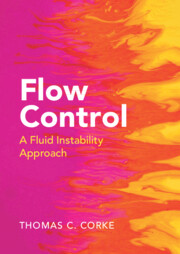Book contents
- Frontmatter
- Dedication
- Contents
- Preface
- 1 Introduction
- 2 Sensors and Actuators
- 3 Bluff Body Wakes
- 4 Separated Flows
- 5 Free Shear Layers and Jets
- 6 Two-Dimensional Laminar Boundary Layers
- 7 Three-Dimensional Laminar Boundary Layers
- 8 Turbulent Boundary Layers
- 9 Shock–Boundary-Layer Interaction
- 10 Flow Control by Design
- References
- Index
10 - Flow Control by Design
Published online by Cambridge University Press: 04 April 2024
- Frontmatter
- Dedication
- Contents
- Preface
- 1 Introduction
- 2 Sensors and Actuators
- 3 Bluff Body Wakes
- 4 Separated Flows
- 5 Free Shear Layers and Jets
- 6 Two-Dimensional Laminar Boundary Layers
- 7 Three-Dimensional Laminar Boundary Layers
- 8 Turbulent Boundary Layers
- 9 Shock–Boundary-Layer Interaction
- 10 Flow Control by Design
- References
- Index
Summary
Chapter 10 considers a broad approach in which the application geometry that dictates the flow field is designed from the beginning, to enhance flow control. Examples include airfoil lift control without moving surfaces. This chapter presents a number of approaches. These range from a simple modification of a geometry to rigorous approaches that utilize an adjoint formulation of the Navier–Stokes equations that identifies sensitivity to changes in geometry and seeks those that maximize flow control authority.
- Type
- Chapter
- Information
- Flow ControlA Fluid Instability Approach, pp. 408 - 431Publisher: Cambridge University PressPrint publication year: 2024

